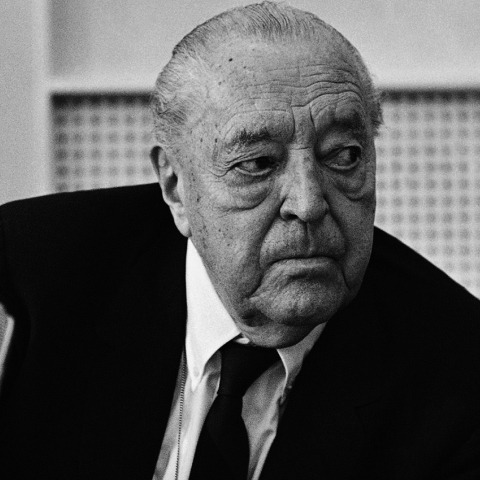The house was commissioned in 1925 by Erich Wolf, a textile manufacturer with great interest in art. The architect was granted complete freedom in the design of the dwelling and for the first time Mies abandons the use of the sloping roof and implements the fluidity of interior spaces, freeing the movement between halls as would later mirror in the Barcelona Pavilion or the Farnsworth House.
This milestone in modern architecture, although it was practically destroyed in 1945 after a bombing of the Soviet army during its entry into Germany, has recently been the subject of controversy among the fields of architecture and restoration.
A group of German architects has begun a campaign to rebuild the family home based on photographs and sketches of the time. One of the leaders of this venture is the retired architect Florian Mausbach, who expects to raise 2 million euros for the reconstruction. This project started last March with a small exhibition in Berlin which, according to what Maushbach said to The New York Times, will travel to other German cities and eventually to Poland and Chicago.
However, this is not the first time that studies on this project of the German architect are made. In 2001 Leo Schmidt, the professor of architecture at the Technical University of Brandenburg in Cottbus, led with Barry Bergdoll, professor of art history at Columbia University and the former chief curator of architecture and design at the Museum of Modern Art in New York, an excavation of the ruins of the house. The investigation work revealed part of the basement walls, which permitted the mapping of the original arrangement of the house.
Schmidt’s opinion on the subject is quite different from the idea proposed by Mausbach of rebuilding the Wolf House. The aforementioned architect believes that, even though the reconstruction of the Barcelona Pavilion helped to understand in depth the work of Mies van der Rohe, the case of the Wolf House is quite different. The reason behind this thought is the own purpose why the house was built, since it was designed to host a large collection of furniture and pieces of art. The information of these objects is scarce, and this too little information would result in a rebuilt empty shell which would not help to expand our knowledge about the famous architect.
According to what Schmidt said to the Times, “The rebuilt house could end up with bare, white-walled rooms, giving modern visitors a totally false impression of the spaces Mies originally created”. The proposal of Schmidt is to preserve the contemporary ruin and to enhance the work by other means than those of reconstruction.
The issue of reconstruction of affected buildings during World War II generates an intense debate in Germany at a more social level, but more with a more ideological approach. Critics say that the reconstruction of these buildings entails the erasure in the collective memory of what the Nazism provoked. Many of them recommend to preserve these buildings its state of ruin to serve as a reminder of the disaster that happened in that times.
It is clear that, there are still issues such as the memory where it is difficult to agree, despite nearly a century has passed since the war. Meanwhile, each side prepares its campaign

































